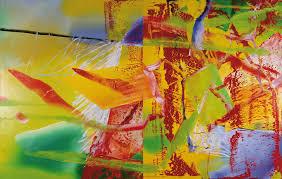Participating artists: A.R. Penck, Albert Oehlen, Alicja Kwade, Andreas Gursky, Anselm Kiefer, Anselm Reyle, Bernd Koberling, Bettina Pousttcchi, Candida Höfer, Christiane Möbus, Christoph Brech, Daniel Richter, Dieter Krieg, Frank Nitsche, Georg Baselitz, Georg Jiri Dokoupil, Gerhard Richter, Gert & Uwe Tobias, Gregor Hildebrandt, Hanne Darboven, Imi Knoebel, Jonathan Meese, Jorinde Voigt, Joseph Beuys, Julian Rosefeldt, Jörg Immendorf, Karl Horst Hödicke, Katharina Fritsch, Katharina Grosse, Marcel Odenbach, Markus Lüpertz, Markus Oehlen, Martin Kippenberger, Martin Kobe, Michael Wesely, Neo Rauch, Norbert Bisky, Olaf Nicolai, Philip Fuerhofer, Rainer Fetting, Reiner Ruthenbeck, Rosemarie Trockel, Ruprecht von Kaufmann, Sabine Hornig, Sigmar Polke, Thomas Florschuetz, Thomas Scheibitz, Thomas Schütte, Thomas Struth, Timm Ulrichs, Werner Büttner, Willi Sitte.
The exhibition will include Paintings, Drawings, Sculpture, Photography and examples of Video Art, with a few singular examples of Conceptual Art. The greater aspect of the exhibition will focus on visual and perceptual contents rather than theorization. As the covered time period began with both West and East Germany, it is necessary to show some examples from the DDR. However, while using singular examples, and particularly works from artists such as Richter, Polke and Baselitz, who existed in the East prior to the Berlin wall, the status of the former East Germany is thus largely represented by artists from the post-unification period.
The title of the exhibition refers to Elective Affinities (1809) by the famous German writer Johann Wolfgang Goethe. The novel title deals with the affinities of human relations, and appears ideal as an approach to an exhibition that will include differing viewpoints of artistic production. In this sense, the exhibition highlights connections, correspondences and derivations, which are created through the interaction of the art works. These almost chemical reactions, which – in Goethe’s novel – form through characters and human characteristics, are echoed in the concept of this show.
The installation of the exhibition is divided into four categories. Since they are non-deterministic, but rather the result of careful architectural design-layout, these zones will flow naturally into one another. They will do so in a manner that also allows for further mental expansion and cross-visual fertilization. The idea of a generic umbrella for the differing types of art works will create opportunities for generational comparison and engagement that is far more textured for the viewing audience. The respective sections are discreetly labeled as:
1. Expression, Imagination, and Subjectivity 2. History and Narrative
3. Abstraction and Conception 4. Presentation and Critique
In certain instances, artists appear in two different areas suggesting the breadth of their practice. They may at times be figurative and/or abstract, historical and/or critical, conceptual and/or historical, critical and/or expressive. The aim is an exhibition with an intense presence and enervating visual and intellectual content
The aim is to make the exhibition visually accessible affording a large attendance response by city inhabitants and the Latvian public in general. There will also — cognizant of the time of year — be an extended possibility of summer international visitor attendance to the exhibition. The exhibition will take place in the exhibition hall Arsenals of the Latvian National Museum of Art. A framework program consisting of discussions and talks with and about participating artists of the show will be developed in cooperation with the Goethe-Institute Riga.
An extensive catalogue will be published by the Kerber Publishing House with contributing articles by Mark Gisbourne (Curator), Christoph Tannert (Director Künstlerhaus Bethanien) and Professor Ojārs Spārītis (President of the Academy of Sciences and Arts Riga).
Contact Latvian National Museum of Art, Riga:
Astrida Rogule | Senior Curator, Contemporary Art Collection | astrida.rogule@lnmm.lv | + 371 265 954 19 |
Pressekontakt:
ARTPRESS – Ute Weingarten | Barbara Green | green.artpress@uteweingarten.de| + 49 (0) 30 484 963 50 |
Download Pressematerial: http://www.artpress-uteweingarten.de/presselounge







Comments 0
Say something